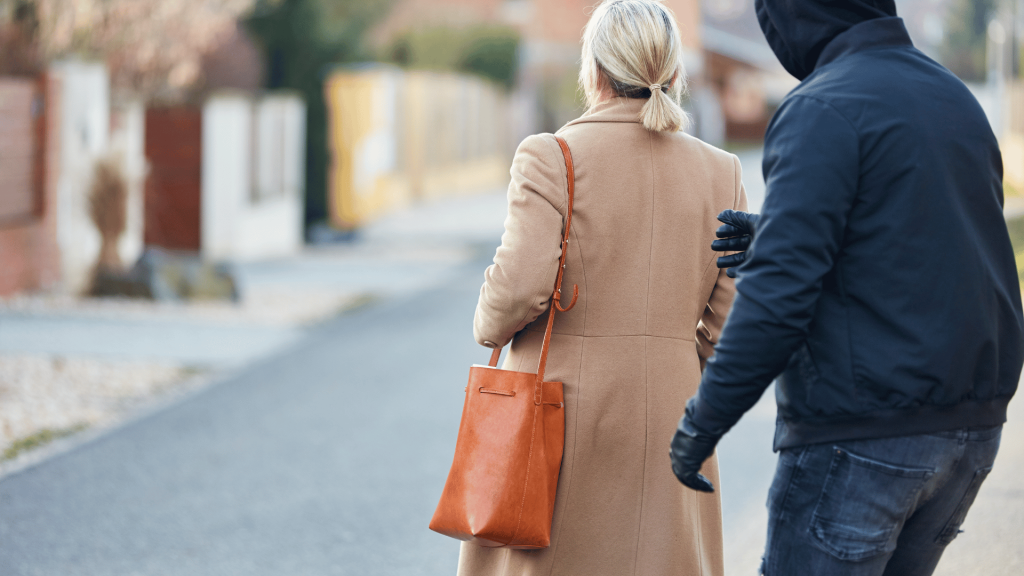Our Blogs
WOMEN’S SAFETY: SMARTPHONE TIPS SHARED ONLINE
People in the UK have been sharing personal safety tips on social media following the death of Sarah Everard who disappeared as she walked home from a friend’s house in south London last week.
Police have confirmed that a body found in woodland near Ashford in Kent is that of the 33-year-old marketing executive.
Metropolitan police commissioner Dame Cressida Dick has said it is “thankfully incredibly rare” for women to be abducted on the streets of London, but women around the country have shared experiences of facing fear or intimidation.
Useful phone features shared include those already built into many smartphones and popular apps, such as shortcuts to emergency call access and temporary location-tracking services.

Emergency call shortcuts
On most smartphones, the unlock screen will include an emergency call button without the need to unlock the device. On some, pressing the on button and a volume key can also bring up a shortcut to 999. On an iPhone 8 or above, continuing to hold these buttons down will sound an alert and start a countdown from three, and if the buttons remain pressed the call will be made automatically. iPhone users can also say the number 14 to the voice assistant Siri, which will then ask whether you want to make an emergency call – although in some countries it will connect straightaway.
Emergency contacts can be set up via the iPhone health app – and the people you choose will be notified if an emergency call is made. Google’s safety app, available on its Pixel handsets, has a similar function. Samsung’s emergency mode is designed to prolong battery life while keeping the phone on standby. It limits features and the home screen is displayed as black but it enables emergency calls, calls to an emergency contact, and location-sharing within a message using minimal power.
Location-sharing
There are a number of location tracker apps available to download, and they are popular – but not everybody wants to be tracked all the time. WhatsApp users can choose a contact, hit the attachment button to the right of the text box and select “location” – this will share the location of the device, only with the person they are messaging, for a certain period of time, ranging from 15 minutes to eight hours. On an Android phone, if the emergency location service is switched on (it’s within settings, under the location tab), the device will automatically share its location with the emergency services during a call. An iPhone will automatically ping its location once the emergency call is finished, but this can be cancelled by the phone owner.
‘Hey Siri, I’m being pulled over’
This iPhone shortcut was not made by Apple itself and was first shared on Reddit in 2018 but has surged in popularity in the US since the protests over the death of George Floyd. It’s designed for car drivers, it requires downloading, it only works on the operating system iOS 12 and above – and certain permissions will have to be activated first. There is no official equivalent for Android, although it is possible to create your own rules for the Google voice assistant.
However, if you’ve jumped through those hoops, detailed here by The Verge, saying “Hey Siri, I’m being pulled over” will result in the phone screen dimming, pausing any music that’s playing, activating do not disturb and starting a video recording through the front-facing camera. The handset will also send an automated message to a chosen emergency contact saying that the owner has been pulled over, and giving their location. In an interview with Business Insider, its creator Robert Peterson described it as “the civilian equivalent” to police-worn body cameras.

Potential violence from online sources
How many violent attacks and sexual assaults on women are there?
The disappearance of 33-year-old Sarah Everard in south London has led to a conversation about violence by men against women. How many women are the victims of violent and sexual crimes, and how many of these cases are reported to police?
How common are killings of women?
In the year to March 2020, 207 women were killed in Great Britain (England, Scotland and Wales). This means about one in four killings were of women. The number of female victims was lower than in the previous year, when 241 women were killed. This was the highest number in a decade. Research from the Femicide Census – an organisation which collects information on men’s violence against women – calculates that across the UK, 1,425 women were killed by men in the 10 years to 2018. That is about one killing every three days.
Who are the victims attacked by?
In the past decade, there were 4,493 male victims of killings and 2,075 female victims (31%) in England and Wales.
- More than nine out of 10 killers were men.
- About 57% of female victims were killed by someone they knew, most commonly a partner or ex-partner. This compares with 39% of men.
- The other victims were either killed by strangers – 13% in the case of women and 30% among male victims – or no suspect has been identified.
- More than 70% of women were killed in their own home – twice the figure for men.
What about other violent attacks?
In general, men are more likely to be victims of violence such as assault.
- It is estimated that about 1.3% of women were victims of violent crime in the year ending March 2020, compared with 2% of men.
- Most violent attacks are by people the victim knows – 92% in the case of women and 79% among men.
- We don’t have statistics which show what proportion of women were attacked by men or other women, but most people found guilty of violent crimes are men.
- In 2019, about 85% of people sentenced in court for violent crime were men.
How common are sexual offences?
In the year ending March 2020, the Office for National Statistics (ONS) estimated that 4.9 million women had been victims of sexual assault in their lives. This included 1.4 million who had been raped, or had faced attempted rape. About 989,000 men had experienced sexual assault, including 87,000 victims of rape or assaulted rape. In total, 98.5% of the rapists were identified as men.
Sexual assault was most common among younger women, with about one in 10 people aged 16 to 24 having been a victim in the past year. One in 40 young women said they had been victims of rape in the past year. One in five women has been the victim of stalking since the age of 16 – twice the number for men. The estimates used the Crime Survey for England and Wales. This involves interviewing thousands of people and is seen as the best way of measuring crimes including those not reported to the police.

How many of these crimes are solved?
The vast majority of sexual offences do not get solved. In fact, most sexual offences do not even get reported to the police. The Crime Survey for England and Wales shows 151,000 people – including 144,000 women – were victims of rape or attempted rape in the last year for which these figures are available. But just 59,000 rapes were actually reported to the police last year. In the same year, just 1,439 people were actually convicted of rape. This was the lowest number since figures started being released in 2014-15.
Why don’t people report the crimes?
Almost a third of women tell no-one if they are victims of rape, or attempted rape, according to the Crime Survey for England and Wales. Fewer than one in six report it to the police. This falls to one in 10 women under 25. The most common reasons for not reporting it are embarrassment, thinking the police couldn’t help, or thinking they wouldn’t be believed.
What about sexual harassment?
Official statistics don’t provide estimates of how many women face sexual harassment. However, surveys suggest the problem is common. A recent YouGov poll for UN Women found that seven out of 10 women had experienced some form of sexual harassment in public. This number was nearly nine out of 10 for younger women.
The survey found:
- Over half of women had experienced catcalling
- Four out of 10 had been groped or faced unwelcome touching
- A third of women had been followed
- One in five had faced indecent exposure
Another YouGov survey, in 2016, found that half of women had been victims of sexual harassment at work, most often through inappropriate comments or touching.
How common is domestic abuse?
Last year, it was estimated that 1.6 million women in England and Wales were victims of domestic abuse. There were 757,000 male victims. These figures include all forms of abuse, including physical, emotional and financial. There has been an increase in domestic abuse since lockdowns began in March of last year. There were 444,000 domestic abuse-related crimes – against both men and women – in England and Wales between April and September. This was almost one in five crimes recorded.
Further reading links
https://www.bbc.co.uk/news/technology-56373292
https://www.one2nine.co.uk/2021/01/24/womens-safety-smartphone-tips-shared-online/
https://blog.chayn.co/do-it-yourself-online-safety-guide-for-women-494a4d7c0ac4
https://blog.dashlane.com/tips-for-women-on-how-to-stay-safe-on-and-offline/
https://www.enostech.com/womens-safety-smartphone-tips-shared-online/
Subscribe to our newsletter for insightful resources & updates
As a subscriber you’ll receive a free copy of our informative guide, ‘The Ultimate Guide to Career Intervention.’
This invaluable resource offers expert advice and strategies for career development.
Get updates telling you about our free training sessions, community services, and campaigns.
We also include a regular job bulletin and other relevant news, keeping you informed and ahead in your professional journey.
Don’t miss out on these essential updates and subscribe today!
Learn with Confidence
Our Accreditations











